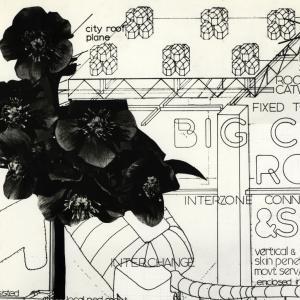AA Research Clusters are year-long special projects, activities and events that bring together diverse groups of AA staff, students and outside partners – audiences, specialists, researchers – to realise a body of focused research. Originally conceived in 2005, Research Clusters are mechanisms for triggering new territories and modes of research. The clusters are intended to promote and cultivate the culture of applied research in the school.
Each year the AA Research Cluster Group, in consultation with existing cluster curators, takes applications from across the school for a new cycle of research areas; there are usually four clusters operating at any one time. In addition to developing expertise and specific projects, Research Clusters seek to challenge existing forms of research and presentation – exploring alternative ways in which work can be produced. These might include events, symposia, conferences, workshops, performances, publications off- or on-site exhibitions, fabrications and interdisciplinary collaborative research and competitions.
Saturated Space
Cluster Curators: Antoni Malinowski, Adam Nathaniel Furman and Fenella Collingridge
Since Plato’s opposition of image to reason, defining image as antithetical to logic, and the consequent antagonisms of rhetoric vs discourse, painting vs drawing and colour vs form, there has been a consistently strong iconoclastic, desaturating, purging tendency in western thought and architectural discipline. It is a line of reasoning that pits superficiality against depth: depth is idolised as pure, abstract, white, difficult to grasp and serious, while whatever is viewed as sensual, eloquent, colourful and essentially non-linguistic is ridiculed as superficial, vulgar, indecent and even pornographic. That which operates directly on the senses is demonised and feared for the potency of its power and ultimately excluded from ‘serious’ discourse.
Colour in architectural discipline and theory is necessarily affected by this categorisation, with its legitimacy, although never its power, in perpetual doubt. This research cluster re-evaluates and restructures the frame of this apparent contradiction. The cluster seeks to develop a set of spatio-chromatic methodologies, and forms them into a combined figure of complementarity, rather than subordination or opposition, with theoretical and scientific discourse.
The most immediate and direct of the multitude of interfaces through which architecture can engage its occupants is that most highly evolved of our perceptual apparatuses: the eye. Its language is of light, its vocabulary chromatic combinations. Reflected off an inexhaustible range of environments and materials, colour in all its forms is the architect’s first and most consistently powerful line of atmospheric influence.
As techniques of fabrication and modes of materiality proliferate in architectural production, a new set of possibilities arise to orchestrate an unprecedented level of spatial richness. At the same time colour is beginning to be rediscovered as an area of interest in art theory, as well as in neuroscience and neuroesthetics. With the process of design, fabrication and discussion as the linear core around which to weave these bodies of knowledge, the cluster generates and documents creative feedback loops between design teams, art theorists, historians and scientists, with influences and reconsiderations reverberating in all directions.






















































